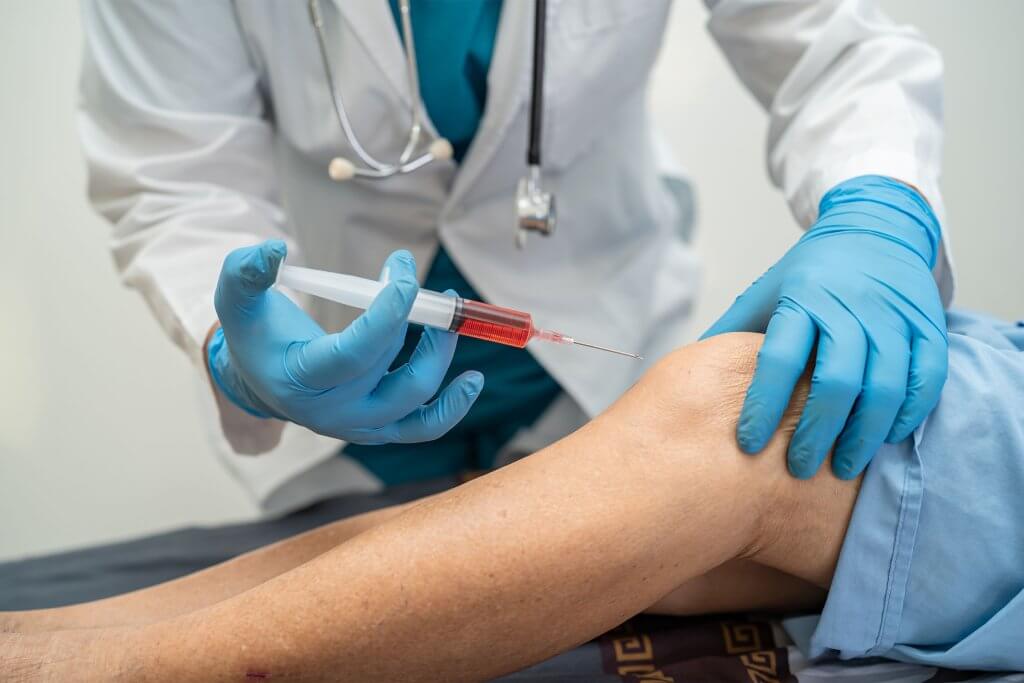- Find a Doctor
- Services & Specialties
-
-
Services & Specialties
-
-
-
-
- Find a Location
- News & Resources
-
-
News & Resources
- Latest News
- Learn More About Our Surgery Centers
- Why Proliance Surgeons?
- Meet Our Leadership
- Meet Our Board
- 24/7 Care Info
- Contact Us Today
- Pay My Bill
- Career Opportunities
- Mission, Vision, Values
- Phreesia FAQ
- Insurance Plans
- Medical Records
- Balance Billing Protection Act
- PELTO Health Partners
- Revenue Cycle Credit Resolution
- Proliance Surgeons Foundation
- Mental Health Resources
-
-
-
-
- Pricing
Platelet-Rich Plasma (PRP) Injections
A blood plasma solution packed with platelet cells that accelerate tissue healing when injected into injuries. It reduces recovery time, avoids surgery, and effectively treats chronic injuries and arthritis.

What is Platelet-Rich Plasma?
Platelet-Rich Plasma is the plasma portion of blood containing concentrated platelet cells. Platelets are specialized blood cells that initiate tissue healing. When the concentrated platelet solution (PRP) is injected into injured tissue, it stimulates the tissue healing process. Treatment with PRP can significantly reduce healing time and eliminate the need for medications or surgery. It can stimulate healing of chronic injuries when the healing process has plateaued. PRP is also used for treating arthritic joints.
Why Does PRP Work?
The concentrated platelets found in PRP contain higher volumes of naturally occurring bioactive proteins, including growth factors that are vital to initiate and accelerate tissue repair and regeneration. These bioactive proteins initiate connective tissue healing, bone, tendon and ligament repair and regeneration, promote the development of new blood vessels, and stimulate the wound healing process.
What Conditions Benefit from PRP?
PRP treatment can be performed in muscles, tendons and ligaments throughout the body. PRP treatments work best for tendon tears, degenerative tendons, and ligament sprains/ tears that have failed other conservative treatments. Conditions that can be treated with PRP include:
- Elbow ligament injuries/sprains (UCL)
- Tennis and golfers elbow(lateral epicondylitis and medial epicondylitis)
- Hamstring and quadriceps tendinosis and partial tears
- Knee ligament sprains (MCL and LCL)
- Patellar tendinosis and partial tears
- Achilles tendinosis
- Plantar fasciitis
- Articular cartilage injuries/osteoarthritis
What is Involved in the PRP Procedure?
Your blood is drawn by our nurse and placed in a specific PRP centrifuge to separate the platelets from the blood. Ultrasound is used to identify the area of pathology/injured tissue. Following an injection of an anesthetic, the PRP injection is performed under ultrasound guidance to ensure accurate placement of the PRP. You are educated on activity modifications. You should avoid strenuous activities for a few weeks. You may be prescribed a rehab program to start 2 weeks following the injection. Some people will experience more pain after injections before feeling better. This is the platelets stimulating the healing process and may last for a few days.
How Many Treatments Are Necessary?
Most injuries will respond to just one treatment with PRP. However, treatment responses can vary depending on the injury and the tissue/body part being treated. Some individuals may require 1 to 3 PRP injections. There are no limits to the number of treatments given and there have been no reported risks after multiple treatments.


